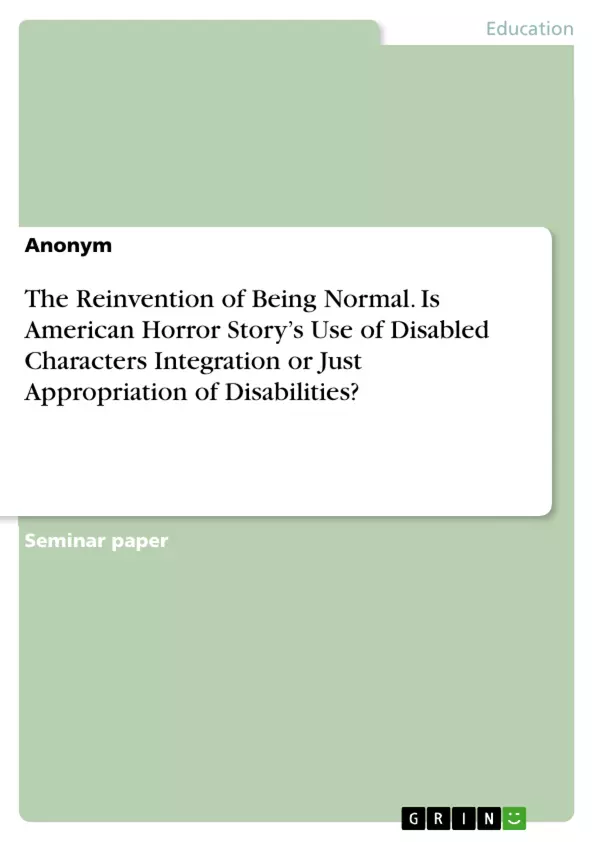In movies and TV shows, the horror genre is mostly known as a genre that creates thrilling plots through abnormalities like monsters or socially unaccepted persons, whose behavior is horrifying. Through killing, psychological abuses, or disabled bodies, the main protagonists seem to be branded by their disability. This makes it hard for the disabled actors who portray these characters to be accepted and treated equal when it comes to movies, especially horror movies.
This paper focuses on the development of the use of disabilities in the show "American Horror Story" to analyze if this show sets a new example on how to present and integrate disabilities into the narrative of the horror genre.
Table of Contents
- Introduction
- The depiction of Adelaide
- Down Syndrome in AHS
- The evolving of the character
- Freakshow and Coven
- Ableism in horror movies
- Disabilities as villainizations
- Reversed Sympathy
- Conclusion
Objectives and Key Themes
This paper examines the representation of disabled characters in the television show American Horror Story, questioning whether the show's use of disability is inclusive or exploitative. It analyzes the portrayal of Down syndrome in the first season, "Murder House," and explores the character's development across subsequent seasons. The paper also investigates the broader themes of ableism and disability within the horror genre, examining how disabilities are often villainized or used for shock value. Ultimately, the paper aims to assess the show's impact on how audiences perceive disability in the context of horror storytelling.
- Representation of disability in horror media
- The portrayal of Down syndrome in American Horror Story
- Ableism and its impact on the horror genre
- The evolution of disability representation in media
- The use of disability as a narrative tool in storytelling
Chapter Summaries
The introduction sets the context for the analysis, discussing the historical trend of using disabilities as shocking elements in horror films. It then introduces American Horror Story and its unique approach to disability representation. The chapter highlights the show's popularity and its attempt to balance storylines with disabled protagonists while maintaining a sense of suspense and horror.
The chapter titled "The depiction of Adelaide" examines the portrayal of a character with Down syndrome in the first season of the show. It focuses on the character's introduction, her relationship with her mother, and the way her disability is represented. This chapter aims to analyze the show's approach to portraying disability and its potential impact on audience perceptions.
The chapter "Freakshow and Coven" provides a further exploration of disability representation in the show, analyzing how different disabilities are portrayed in the context of the "Freakshow" and "Coven" seasons. This chapter delves into the show's handling of diversity and inclusion and its potential to challenge societal biases.
The chapter "Ableism in horror movies" addresses the broader issue of ableism within the horror genre, examining how disability is often used as a tool for villainization and shock value. It explores the history of disability representation in horror films and the potential impact of such representations on societal perceptions of disability.
Keywords
The key concepts and themes explored in this paper include disability representation, ableism, horror genre, American Horror Story, Down syndrome, inclusion, diversity, shock value, and narrative tools.
- Arbeit zitieren
- Anonym (Autor:in), 2020, The Reinvention of Being Normal. Is American Horror Story’s Use of Disabled Characters Integration or Just Appropriation of Disabilities?, München, GRIN Verlag, https://www.hausarbeiten.de/document/1148597


